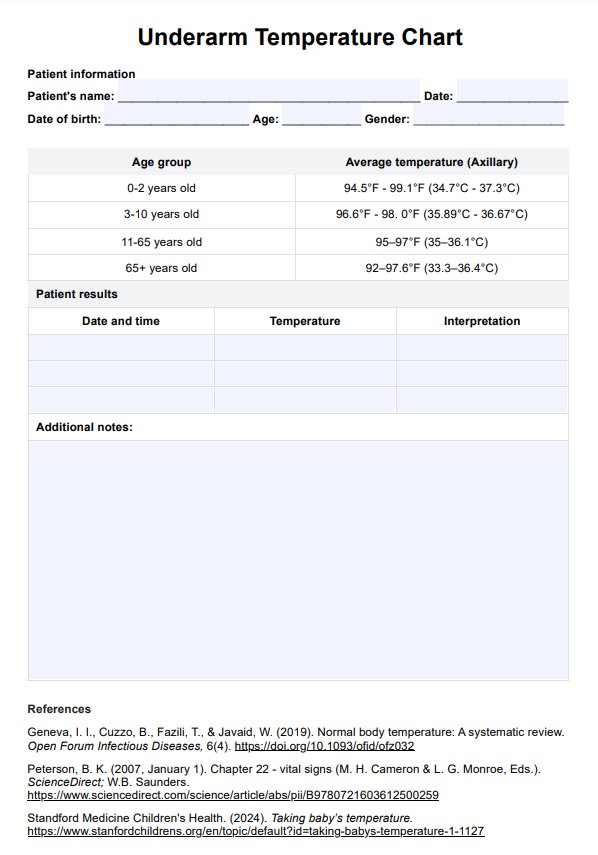The average body temperature taken using the armpit typically ranges between 97.2°F and 99.0°F (36.2°C and 37.2°C). However, it’s slightly higher in infants and lower in the elderly. Underarm readings are generally lower than oral temperatures and can vary with environmental factors and individual differences.

Underarm Temperature Chart
Discover our comprehensive Underarm Temperature Chart, which is ideal for accurately monitoring temperature variations for better health management.
Underarm Temperature Chart Template
Commonly asked questions
An additional degree is often added to armpit temperature readings to compensate for the difference between skin temperature and the body’s core temperature. Underarm readings are usually lower than the body’s internal temperature, so this adjustment helps estimate the actual core temperature more accurately.
For a toddler, an underarm temperature for fever is 99.0°F (37.2°C) or higher. Since toddlers have varying normal temperature ranges, it’s important to consider other signs of illness and consult a healthcare provider for accurate assessment and advice.
EHR and practice management software
Get started for free
*No credit card required
Free
$0/usd
Unlimited clients
Telehealth
1GB of storage
Client portal text
Automated billing and online payments











